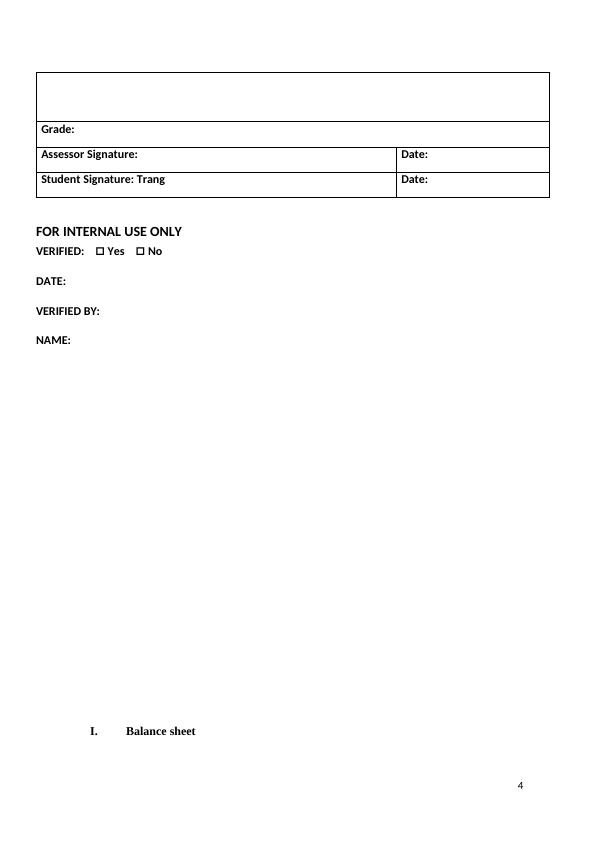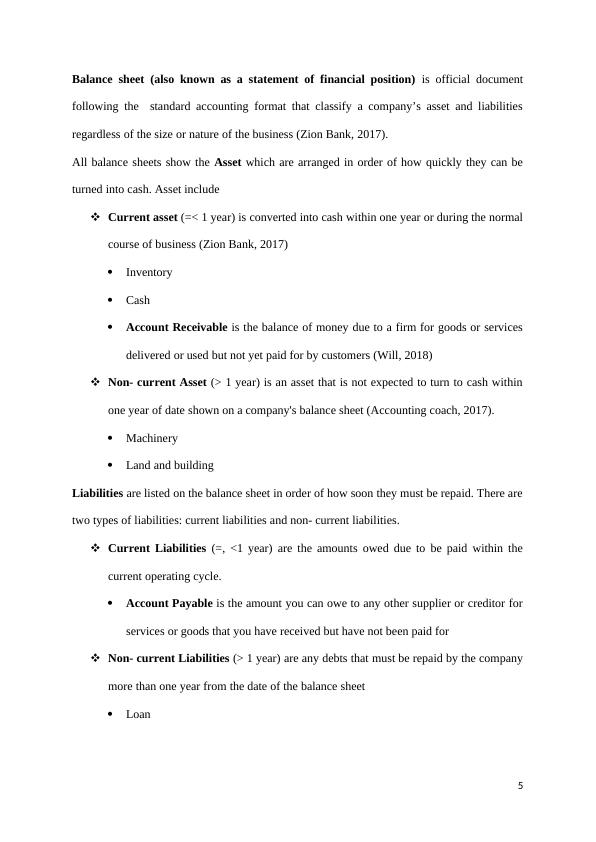Ask a question from expert
Unit 14: Advanced Management Accounting
25 Pages5572 Words389 Views
Added on 2021-03-25
Unit 14: Advanced Management Accounting
Added on 2021-03-25
BookmarkShareRelated Documents
Assignment Front SheetStudentName/ID/Class(V)Trần Linh Trang ID:F11- 085(E) (Class) F11CUnitTitleUnit 14: Advanced Management AccountingAssignment TitleAMA1: Accounting Advisory ReportAssignmentNumber1AssessorSubmissionDateDateReceived1stSimilarity Report In This Assessment You Will Have Opportunities To Provide Evidence Against The Following Criteria.Indicate The Page Numbers Where The Evidence Can Be FoundSTUDENT DECLARATION:I certify that the work submitted for this assignment is my own. I have clearly referenced any sources used in the work. I understand that false declaration is a form of malpractice.Student Signature: Trang Date: 26/12/20191

Achievement SummaryAssessmentCriteriaIn the assessment you will havethe opportunity to presentevidence that shows you areable to:Evidence(page no)Achieved(tick)InternalVerificationFirstAttemptRe-submissionLO1 Analyse the purpose for developing and presenting financial informationP1Analyse the purpose and presentation of financial information from the perspective ofdifferent stakeholders.M1Evaluate how and why financial information should be developed and appropriately presented to support financial planning and decision-making.D1Critically evaluate financial information supported by effective and appropriate judgements.LO2Evaluate the use of management accounting techniques to support organisational performanceP2Evaluate the use of different accounting microeconomic techniques in application to supporting organisational performance.M2Evaluate the value and importance of a wide range of accounting techniques by assessing both advantages and disadvantagesLO3 Analyse actual and standard costs to control and correct variancesP4Analyse actual and standard costs to control and correct variances.M3Evaluate the advantages and disadvantages of different types of variances.LO2& LO3D2Critically evaluate the application ofdifferent accounting techniques andvariances to support conclusions 2

and recommendations.LO4 Evaluate how a changing business environment impacts on management accountingP5Evaluate how external and internal factors changing the business environment impact upon management accounting.M4Determine the impact of different types of change and the decisions made to respond to these changes.D3Critically evaluate the impact of changes, and support justified recommendations for future communication and acceptance of change.Assignment FeedbackFormative Feedback: Assessor to StudentAction PlanSummative Feedback:3

Grade:Assessor Signature:Date:Student Signature: Trang Date:FOR INTERNAL USE ONLYVERIFIED: □ Yes □ NoDATE:VERIFIED BY:NAME:I.Balance sheet4

Balance sheet (also known as a statement of financial position) is official documentfollowing the standard accounting format that classify a company’s asset and liabilitiesregardless of the size or nature of the business (Zion Bank, 2017). All balance sheets show the Asset which are arranged in order of how quickly they can beturned into cash. Asset include Current asset (=< 1 year) is converted into cash within one year or during the normalcourse of business (Zion Bank, 2017)InventoryCashAccount Receivable is the balance of money due to a firm for goods or servicesdelivered or used but not yet paid for by customers (Will, 2018)Non- current Asset (> 1 year) is an asset that is not expected to turn to cash withinone year of date shown on a company's balance sheet (Accounting coach, 2017). MachineryLand and building Liabilities are listed on the balance sheet in order of how soon they must be repaid. There aretwo types of liabilities: current liabilities and non- current liabilities. Current Liabilities (=, <1 year) are the amounts owed due to be paid within thecurrent operating cycle. Account Payable is the amount you can owe to any other supplier or creditor forservices or goods that you have received but have not been paid forNon- current Liabilities (> 1 year) are any debts that must be repaid by the companymore than one year from the date of the balance sheetLoan 5

Equity refers to the net financial amount the owner of the company has invested in thebusiness, including all retained earnings (Elise, 2019)Share Capital is the money a company raises by issuing common or preferredstockRetained Earnings is the amount of net income left over for the business after ithas paid out dividends to its shareholders. \The benefits for userInvestorIn balance sheet, Investor wants to know aboutthe total asset of the company such as: cash,equipment, land, building, inventories, investment, etc because they can know how muchmoney the company owns and its cash stockpile is big enough to pay money borrowed backto bankers. Additionally, the investors are able to see the ability in making good on its short-term financial obligations.Moreover, investors see the shareholder’s equity is the money which goesto the company,its owner or shareholder because it represents the amount that will be returned to theshareholders if all the assets are liquidated and all the debts of the company have been paidoff. Shareholder’s equity= Total asset- liabilities, higher equity means more money forshareholders which is company’s net income, net worth and overall value. CreditorDebt-to-equity ratio = Total liabilities / Shareholder’s equity (Current ratio).The currentratio is a liquidity and efficiency ratio that measures a firm’s ability to pay off its short-termliabilities with its current assets. 6

End of preview
Want to access all the pages? Upload your documents or become a member.
Related Documents
Unit 7 : Business Law PDFlg...
|54
|11965
|102
BTEC Level 4 HND Diploma in Business Lawlg...
|53
|10366
|100
Unit 7: Business Law Assignment PDFlg...
|34
|5017
|548
Management Accounting Systems & Techniqueslg...
|7
|2610
|20
Assessment of a Business Unit: Organisational Types, Functions and Structureslg...
|28
|8827
|20
Organisational Types, Functions and Structureslg...
|23
|8766
|29